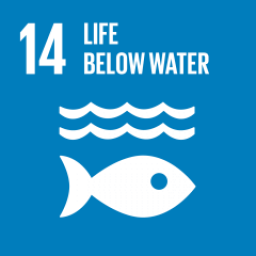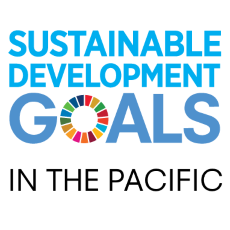
SDG 14 - Life Below Water
Conserve and sustainably use the oceans, seas and marine resources for sustainable development
The Blue Pacific continent contains and supports the most extensive and diverse coral reefs in the world, the largest tuna fishery, the deepest oceanic trenches and the healthiest and in some cases, largest remaining populations of many globally threatened species such as whales and dolphins, sea turtles, dugongs, sharks and stingrays.
Goal 14 will monitor regional efforts in integrated and sustainable ocean management and conservation, adaptation, mitigation and biodiversity activities.
By 2025, prevent and significantly reduce marine pollution of all kinds, in particular from land-based activities, including marine debris and nutrient pollution
Indicator 14.1.1: (a) Index of coastal eutrophication; and (b) plastic debris density
Visualisation(s) not yet available
View 14.1.1 on PDH.stat
By 2020, sustainably manage and protect marine and coastal ecosystems to avoid significant adverse impacts, including by strengthening their resilience, and take action for their restoration in order to achieve healthy and productive oceans
Indicator 14.2.1: Number of countries using ecosystem-based approaches to managing marine areas
Visualisation(s) not yet available
View 14.2.1 data on PDH.stat
Minimize and address the impacts of ocean acidification, including through enhanced scientific cooperation at all levels
Indicator 14.3.1: Average marine acidity (pH) measured at agreed suite of representative sampling stations
Visualisation(s) not yet available
View 14.3.1 data on PDH.stat
By 2020, effectively regulate harvesting and end overfishing, illegal, unreported and unregulated fishing and destructive fishing practices and implement science-based management plans, in order to restore fish stocks in the shortest time feasible, at least to levels that can produce maximum sustainable yeild as determined by their biological characteristics
Indicator 14.4.1: Proportion of fish stocks within biologically sustainable levels
Visualisation(s) not yet available
View 14.4.1 data on PDH.stat
By 2020, conserve at least 10 per cent of coastal and marine areas, consistent with national and international law and based on the best available scientific information
Indicator 14.5.1: Coverage of protected areas in relation to marine areas
By 2020, prohibit certain forms of fisheries subsidies which contribute to overcapacity and overfishing, eliminate subsidies that contribute to illegal, unreported and unregulated fishing and refrain from introducing new such subsidies, recognizing that appropriate and effective special and differential treatment for developing and least developed countries should be an integral part of the World Trade Organization fisheries subsidies negotiation
Indicator 14.6.1: Progress by countries in the degree of implementation of international instruments aiming to combat illegal, unreported and unregulated fishing
NOTE: Countries listed with no score (zero) means figure was not provided, or the method which the figure was calculated is unknown.
By 2030, increase the economic benefits to small island developing States and least developed countries from the sustainable use of marine resources, including through sustainable management of fisheries, aquaculture and tourism
Indicator 14.7.1: Sustainable fisheries as a proportion of GDP in small island developing States, least developed countries and all countries
Visualisation(s) not yet available
View 14.7.1 data on PDH.stat
Increase scientific knowledge, develop research capacity and transfer marine technology, taking into account the Intergovernmental Oceanographic Commission Criteria and Guidelines on the Transfer of Marine Technology, in order to improve ocean health and to enhance the contribution of marine biodiversity to the development of developing countries, in particular small island developing States and least developed countries
Indicator 14.a.1: Proportion of total research budget allocated to research in the field of marine technology
Visualisation(s) not yet available
View 14.a.1 data on PDH.stat
Provide access for small-scale artisanal fishers to marine resources and markets
Indicator 14.b.1: Progress by countries in the degree of application of a legal/regulatory/policy/institutional framework which recognizes and protects access rights for small-scale fisheries
NOTE: Countries listed with no score (zero) means figure was not provided, or the method which the figure was calculated is unknown.
Enhance the conservation and sustainable use of oceans and their resources by implementing international law as reflected in the United Nations Convention on the Law of the Sea, which provides the legal framework for the conservation and sustainable use of oceans and their resources, as recalled in paragraph 158 of “The future we want"
Indicator 14.c.1: Number of countries making progress in ratifying, accepting and implementing through legal, policy and institutional frameworks, ocean-related instruments that implement international law, as reflected in the United Nation Convention on the Law of the Sea, for the conservation and sustainable use of the oceans and their resources
NOTE: this indicator is not one of the 132 indicators in the Pacific SDG indicator subset

